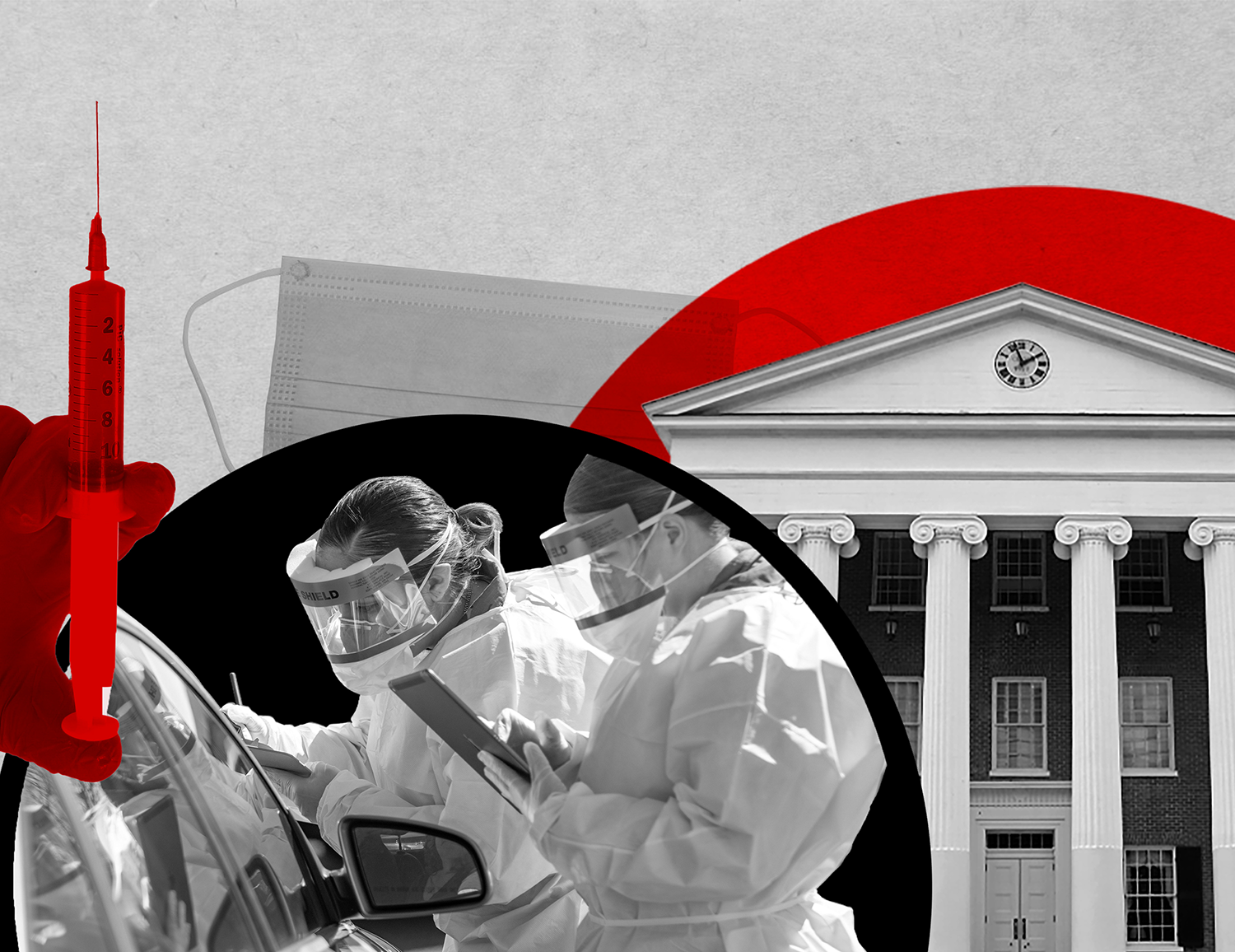
With the end of fall semester approaching, COVID-19 numbers could spike if college students return to their home for winter break without taking proper precautions.
Many schools are following guidelines established by the American College Health Association (ACHA) in a brief on Oct. 29, including the University of Mississippi.
The document lists precautions that students and universities can take to reduce the spread of the virus when campuses clear and return home for Thanksgiving, including a guideline to “maintain active testing, contact tracing and other public health measures until the end of the semester so that case rates are as low as possible when the semester ends.” In accordance with this guideline, the university has increased the number of free, asymptomatic testing slots available to faculty, staff and students during the final three weeks of the semester.
“It is important to reiterate that testing is an important strategy that helps our university manage the COVID-19 pandemic,” Provost Noel Wilkin wrote in an email to the campus community on Nov. 9. “Decisions about social events and restrictions will be based on testing participation and positivity rate. Testing enables us to meet our goal to remain open and operational.”
“The fact (that) COVID-19 can spread unknowingly has added a great deal of complexity to the pandemic,” Anita Barkin, co-chair of the ACHA COVID-19 task force, said.
Barkin said the association released the guidelines after universities who are members of the ACHA, like the University of Mississippi, expressed “high interest” in a document that included guidelines for students returning home safely at the end of the fall term. Barkin said that if universities follow the guidelines from her team and the Center for Disease Control, the risk of a spike will be significantly reduced.
“Yes, there is a real risk (of spread),” Barkin said. “Anytime you have people traveling from one location to another, you have to assess risk of spreading disease. Given that we have a high prevalence of disease occurring across the country, traveling back and forth from campus to home and home back to campus increases the risk of spread.”
The ACHA recommends students adopt a “know before you go” approach to exiting campus, taking as many precautions as possible to reduce bringing the virus across city and state lines. The guidelines also encourage reducing the number of people with whom students have close contact prior to the travel, consistently wearing a mask, using hand sanitizer and getting tested for COVID-19 before and after leaving campus.
“Everyone has to take responsibility for reducing the risk of spread,” Barkin said. “Individuals need to follow the guidance for safe travel and reducing risk of spread. Campuses should communicate the school’s plans and requirements and also provide information and resources for testing and care available both on and off campus.”
The ACHA advises that institutions should also be prepared to provide housing and services for any students that cannot travel due to a positive test before their departure. Ole Miss Student Housing will continue to offer quarantine spaces to on-campus residents over winter break. It will also offer housing options over break for students who are unable to return home.
College campuses are considered high-risk areas, especially when it comes to asymptomatic transmission, given that many college-aged students experience only minor symptoms.
Alex Langhart, the director of University Health Services, said that the university will not require students to be tested before returning home or before returning to campus for spring semester, but health services guidelines are in accordance with those outlined in the ACHA brief.
Since the program’s start on Sept. 8, only about 12% of students have gotten tested through the sentinel testing program, leaving a little over 16,000 students untested. Earlier in the semester, a physician at the University of Mississippi Employee Health Service wrote a letter to the editor about the “underwhelming” response to the sentinel testing program.
The New York Times has reported more than 250,000 cases on college campuses, but it is hard to know the exact number when so many students have not been tested at all.
“The more our campus population participates in surveillance testing, seeks testing and reports positives to University Health Services and engages with the university’s contact tracers, the more confident we can be in the data on our dashboards,” Langhart said. “It takes everyone doing their part to prevent the spread of the virus.”
At the time of publication, the university’s COVID-19 dashboard shows 33 confirmed active cases, 27 of which are students, five are staff and one is faculty. UM’s aggregate confirmed cases since March on the Oxford campus is up to 878.
Liz Sharlot, director of communication at the Mississippi State Department of Health, said that asymptomatic spread is a worry, but that it’s too difficult to judge the effect it has on infection.
“Sadly, in public health there are no crystal balls,” Sharlot said. “We can’t speculate, but we are always concerned about community transmission.”
Anna Lauren Kornegay, a senior integrated marketing communications major, said she plans to get tested before heading to her grandparents’ house for Thanksgiving.
“My biggest fear is to have asymptomatic COVID,” Kornegay said. “To have it and not realize it and pass it on to my elderly grandparents, I would not be able to live with myself if something were to happen to them when I leave to go back for Thanksgiving.”
Typically, Kornegay said she gathers with extended family for a week of Thanksgiving festivities just outside of Oxford. In an attempt to limit COVID-19 exposure, though, they will be having one Thanksgiving dinner instead.
Ultimately, Kornegay said she is willing to take any precautions possible to be able to see her family, and she is one of many who will follow these precautions when leaving Oxford at the end of the semester.
Correction: Because of an editing error, an earlier version of this story should have attributed language about the lack of student at the university to Jean Gispen’s letter to the editor, not Alex Langhart, the director of University Health Services.














